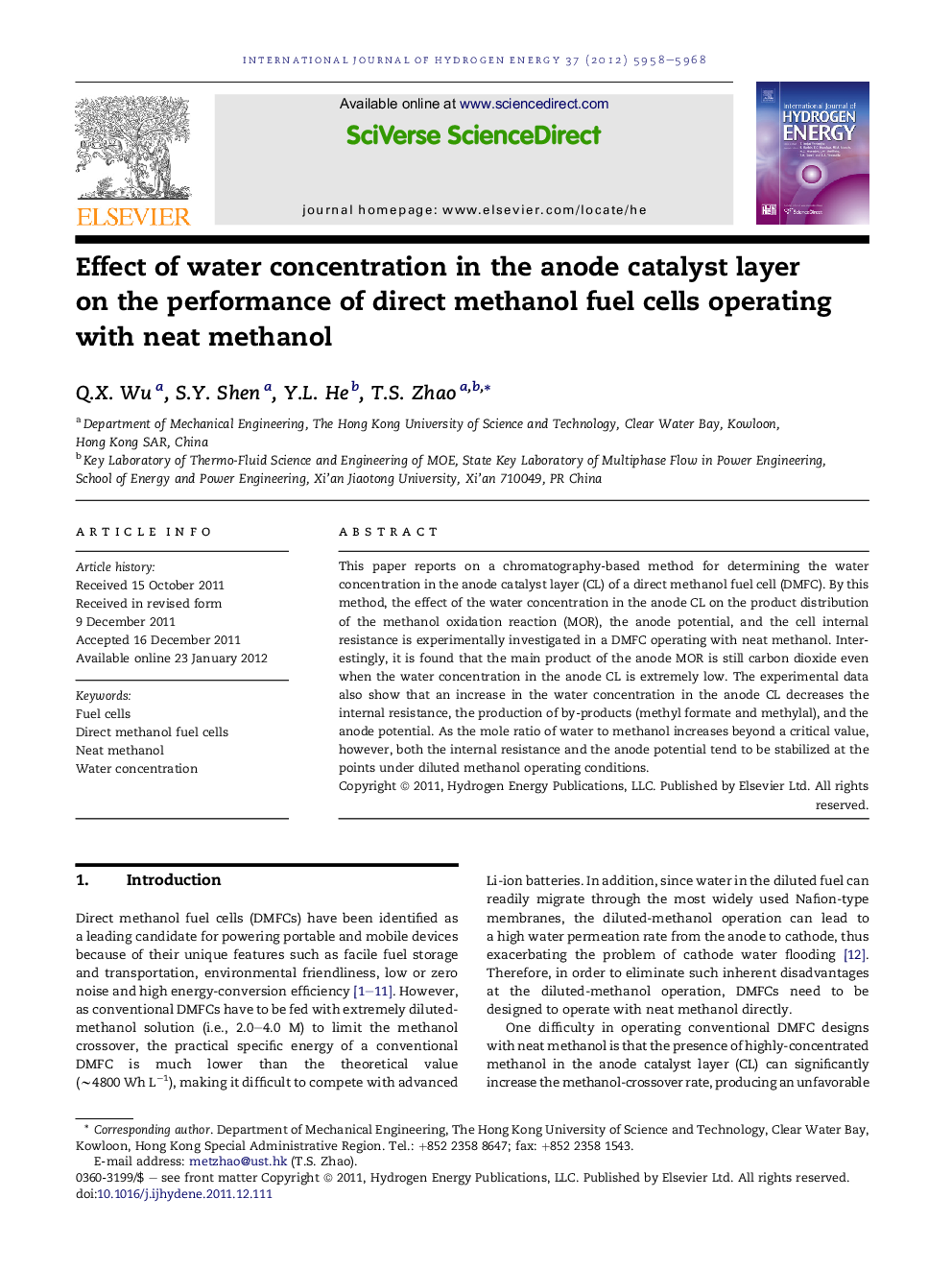| Article ID | Journal | Published Year | Pages | File Type |
|---|---|---|---|---|
| 1276888 | International Journal of Hydrogen Energy | 2012 | 11 Pages |
This paper reports on a chromatography-based method for determining the water concentration in the anode catalyst layer (CL) of a direct methanol fuel cell (DMFC). By this method, the effect of the water concentration in the anode CL on the product distribution of the methanol oxidation reaction (MOR), the anode potential, and the cell internal resistance is experimentally investigated in a DMFC operating with neat methanol. Interestingly, it is found that the main product of the anode MOR is still carbon dioxide even when the water concentration in the anode CL is extremely low. The experimental data also show that an increase in the water concentration in the anode CL decreases the internal resistance, the production of by-products (methyl formate and methylal), and the anode potential. As the mole ratio of water to methanol increases beyond a critical value, however, both the internal resistance and the anode potential tend to be stabilized at the points under diluted methanol operating conditions.
► An issue with DMFCs operating with neat methanol is water shortage on the anode. ► A method is developed for determining the water concentration at the ACL of DMFCs. ► The effect of water concentration on MOR product and anode potential is studied. ► CO2 is still the main MOR product though the water concentration is extremely low. ► The anode potential stabilizes at a critical H2O:CH3OH ratio.
